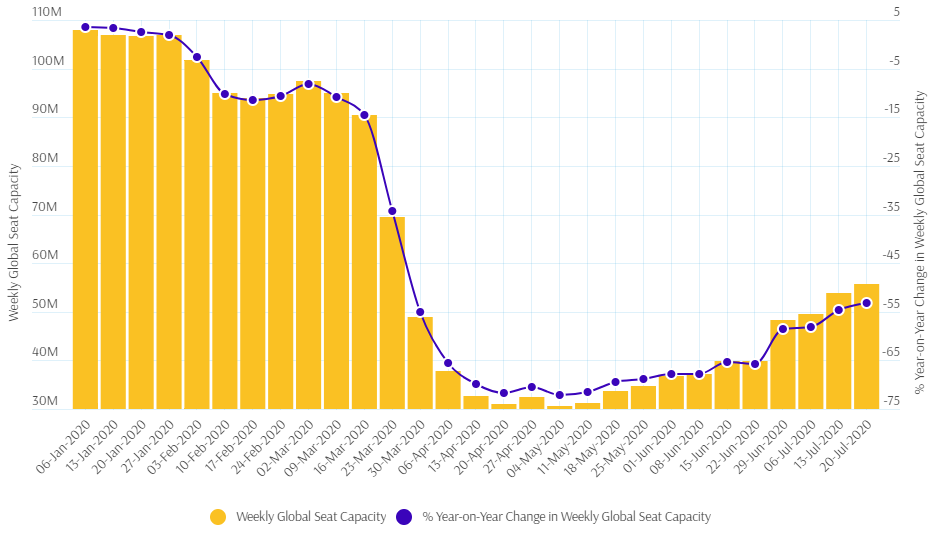Many airports and airlines are already working on creating a contactless travel journey from buying the ticket, check-in, baggage drop and boarding, to immigration. There are numerous systems already in circulation and in development aimed at helping the travel industry create a safe system. However, as with everything else currently, there is a piecemeal approach to these services.
A number of airports are trialling different biometric ways for passengers to be able to pass through an airport, on arrival and departure, without having to hand over their passport or travel documentation. Many airlines are working on contactless check-in and baggage drop, with many also working on ways to ensure contactless boarding, including through the use of biometrics.
Technology provider SITA has just released a paper, 'Runway for Future Operations' which details the steps they believe are required for the air transport industry to deliver safer, smarter and leaner air travel and create sufficient confidence for people to begin to travel again.
The publication outlines a number of areas that needs to be addressed to ensure the touchless travel journey required. These include:
- Enabling a passenger to be ready to fly before they arrive at the airport. This includes travel authorisation, bag-drop and check-in all facilitated away from the airport to reduce passenger queuing and to enable social distancing. Health ETAs (Electronic Travel Authorisation) once standardised, will also help streamline the process.
- Enabling safer, easier passage through the airport. This will be essential to improve passenger confidence in the travel process. Biometrics capable of recognising faces with masks on and passengers being able to use their mobile phone as a remote control for travel will play a key role. Also touchless bag tagging and digital boarding pass stamps at security all to ensure physical distancing and zero contact with airport and airline staff.
- Safety on arrival and beyond. Border checks must become totally touchless so linking with the passenger's pre-checked identity, their journey and health information will be critical. Processing passengers via biometric-enabled gates or traditional border checkpoints is becoming faster and completely touchless, further reducing the time of exposure in the airport, congestion levels and contact points. Passengers should also receive personal notifications advising bag arrival location and times, to help avoid clusters forming in the baggage hall. And, in the unfortunate event of losing a bag, they should be able to use mobile lost bag reporting facilities to check the status on any lost bags and make connection with the airline.
SITA believes that automation is key and biometrics will be essential in this process with our faces essentially replacing passports and boarding cards. "The industry has to achieve far more with far less in order to thrive in a significantly smaller market where passenger numbers may be uncertain for years to come," explains Barbara Dalibard CEO of SITA.
"We need a focus shift from immediate actions like masks and hand sanitisers to longer-term and more sustainable solutions. Automation of operations will play an important role in reducing queues and touchpoints at the airport as passenger volumes begin to recover and social distancing becomes increasingly difficult," she adds.
Ms Dalibard believes "resilient and agile systems that increase efficiencies and can respond to unpredictable fluxes in passenger numbers will greatly influence those who can adapt and thrive in this new reality". She adds: "The pandemic represents a new 9/11 moment for air travel and how we respond will define our industry for decades to come."
CHART - Global air capacity has collapsed as the Covid-19 pandemic has spread across the world and this week's offering highlights that we have now passed the stabilisation stage and are taking continued steps in the recovery Source: The Blue Swan Daily and OAG (data: 20-Jul-2020)
Source: The Blue Swan Daily and OAG (data: 20-Jul-2020)
The paper was released at the same time as SITA's latest flight data that indicates global flight volumes are starting to recover. SITA's data shows that flight volumes dropped -69% year-on-year in Jun-2020, which is significantly better than May-2020's year-on-year drop of -80%. On a week-over-week basis, SITA's figures for the week 8-Jul-2020 - 14-Jul-2020 shows the eighth consecutive increase in air traffic. The global air traffic is now operating at 45% of its pre-Covid-19 capacity.
Technological improvements are coming but need to come faster and with a more streamlined approach to help us all feel confident enough to travel again. We may not get back to 2019 passenger levels any time soon but with the fast track advances being made hopefully our confidence in the travel process will continue to grow.